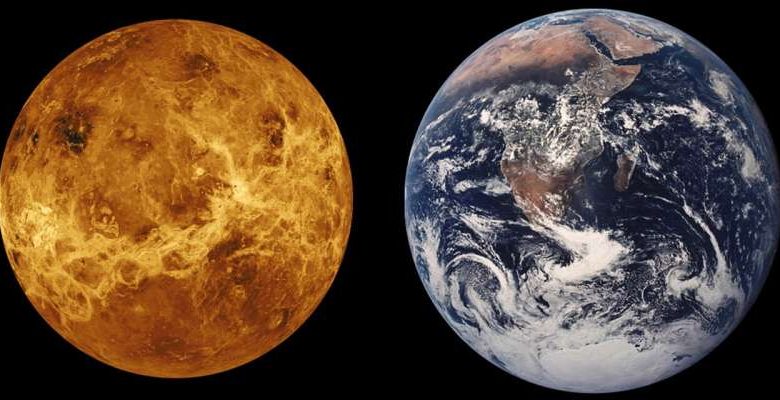Venus may have Earth-like lithospheric thickness and heat flow

Poor old Venera 9, the Soviet Union’s Venus lander, separated from its orbiter and made a hot, violent descent through the dense Venusian atmosphere on October 22, 1975, landing hard on a circular shield designed to crumple and absorb the impact.
It only survived the intense surface conditions for 53 minutes, transmitting data regarding clouds, light irradiance, temperature and atmospheric chemistry, as well as the first image ever taken of the surface of another planet. And then it died. But its findings were significant because Venus and Earth are similar terrestrial planets believed to have formed through similar processes.
It’s fair to say that while Earth and Venus are siblings, with comparable size and composition, they are vastly different in character, the Dennis and Randy Quaid of the inner solar system. (Venus is not Dennis in this analogy.) Earth harbors conditions amenable to life; by contrast, describing Venus as inhospitable is a hilarious understatement.
Venus’s atmosphere, the densest and hottest of the four terrestrial planets, consists primarily of carbon dioxide with pressure at the surface about 92 times the sea level atmospheric pressure on Earth. The mean planetary temperature hovers around 464 degrees Celsius (867 degrees Fahrenheit). Pretty bad! And while it does not have a moon, even if it did, the dense clouds of sulfuric acid that shroud the entire planet would obstruct any idyllic nighttime views.
Another trait Venus shares with Earth, however, is that it sheds interior heat into space. Geologists know that plate tectonics drive interior heat loss on Earth, radiating heat at the sites where plates pull apart, but little is known about the interior dynamics of Venus.
Now, researchers at the Jet Propulsion Laboratory in Pasadena, California, have conducted an analysis of data gathered by the Magellan spacecraft in the 1990s to calculate the thickness of the crust on Venus. Their results indicate that despite their vastly different personalities, Earth and Venus have comparable heat flow and similar lithospheric thickness; this places constraints on Venus’ evolution and interior dynamics. The results are published in Nature Geoscience.
Earth has mobile tectonic plates that slide around, crash into each other and separate, facilitating efficient heat loss. Previous models suggested that Venus had either a “stagnant lid” lithospheric situation—basically an immobile, cold lithosphere covering the entire planet—or an “episodic lid,” in which an unstable stagnant lid occasionally bursts into tectonic activity. But more recent models and data analysis don’t support these proposals. Instead, the JPL researchers suggest a “squishy-lid” model with active lithospheric flexure.
The researchers computed the thickness of the lithosphere by measuring the flex within surface formations called coronae, quasi-circular features formed through geologic and volcanic activity. Using Magellan altimetry data, they determined the average thickness of the lithosphere from 75 locations within 65 coronae: 11±7 kilometers; from this figure, they calculate an average heat flow from Venus higher than Earth’s average, but similar to the values measured at actively extending tectonic areas.
The authors write, “Our analysis identifies likely areas of active extension and suggests that Venus has Earth-like lithospheric thickness and global heat flow ranges. Together with the planet’s geologic history, our findings support a squishy-lid convective regime that relies on plumes, intrusive magmatism and delamination to increase heat flow.”
This is interesting because plume-induced subduction is believed by many researchers to be the origin of Earth’s plate tectonics, and Venus could thus be analogous to Earth during the Archaean Eon 4 to 2.5 billion years ago. During the Archaeon, Earth’s heat flow was about three times as high as today, and though covered by water, the planet was much hotter.
Overall, the authors present the squishy-lid model as a good fit with other observations, featuring limited surface mobility, intrusive magmatism, lithospheric delamination (in which a material fractures into layers) and formation of the coronae via uplifting and downwelling. And it comprises another mode of planetary geodynamics that differs interestingly from Earth’s.
Another application of these findings: The determination of exoplanetary habitability would rely on information about heat flow on worlds orbiting other stars. But closer to home, if the group’s “squishy lid” proposal can be confirmed by any of this decade’s upcoming Venus observation missions, it will likely lead to a reappraisal of ideas surrounding Venus surface features as well as the evolution of the planet’s mantle, and could even have implications for the early formation of the solar system.





